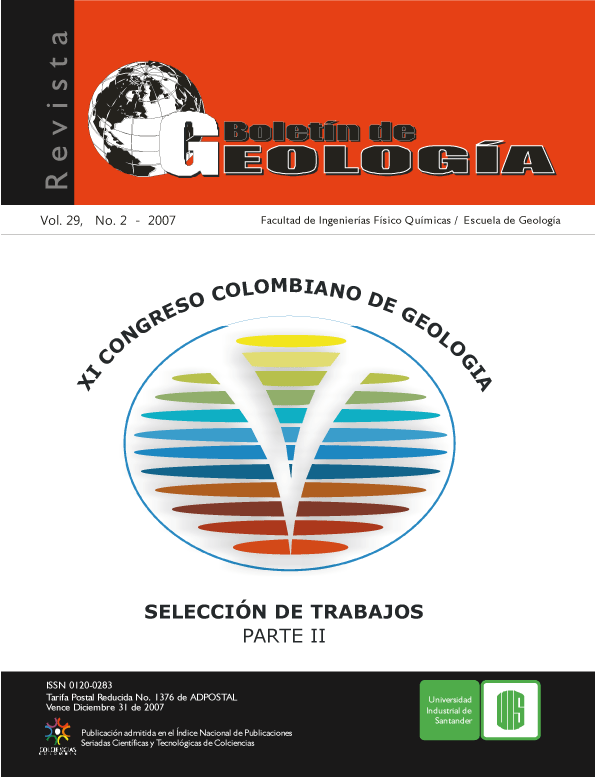HIGHT RESOLUTION SRATIGRAPHY FRAMEWORK FOR CARBONATIC DEPOSITS OF TERCIARY OF THE BASIN CAMPOS
How to Cite
Abstract
The Siri Member is of great importance due to the heavy oil content that is present on the carbonate platform developed during the Tertiary. Considering this importance, we conducted a study with the objective of generating a high resolution stratigraphic framework, on 3rd order sequences, using the interpretation of two seismic sections and the analysis of fve well logs. The proposed framework allowed for the development of a depositional model that helped on the understanding of the evolution of the carbonate production of the Tertiary on the external platform of the Campos Basin.
The proposed model suggests the development of a mixed isolated platform (siliciclastic-carbonatic) generated over structural horst remaining from the rift fase, resulting from the beginning of the break up of South America and Africa. The detailed and regional interpretation of the seismic sections also allowed to infer a process of tectonic reactivation during the instal-lation of the carbonate platform. This process would have given the asymmetric character to the platform, and would have facilitated local process of simultaneous differential subsidence with the production of carbonate sediment.
Key words: Siri Member, carbonatics rocks, hight resolution stratigraphy, seismic stratigraphy, depositional model.
Downloads
References
Campbell, A.E (2005). Shelf-Geometry Response to Changes in Relative Sea Level on a Mixed Carbonate-Siliciclastic Shelf in the Guyana Basin. Sedimentary Geology 175, pp. 259-275.
Cobbold, P.R et al. (2001). Reactivation of an obliquely rifted margin, Campos and Santos Basins, Southeastern Brasil. AAPG Bulletin, Vol. 85 (11), pp. 1925-1944 November. USA
Figuereido, A.M; Milani E.J (2000). Sedimentary basins of South América. Memórias do XXXI Congresso Internacional de Geologia. Rio de Janeiro Agosto de 2000
Guardado, L.R et al. (1989). Petroleum Geology of the Campos Basin, Brazil, A Model for a Producing Atlantic Type Basin. Divergent/Passive Margin Basin. Ed. AAPG, Memoir 48, pp. 3-79. USA
Mitchum, R.M. et al. (1977). Seismic Stratigraphy and global changes of sea-level, part 7: stratigraphic interpretation of seismic reflection patterns in depositional sequences. Seismic Stratigraphy – Applications to hydrocarbon Explotation. Ed. AAPG, Memoir 26, pp. 135-144. USA
Posamentier, H.W et al. (1988). Eustatic Controls on Clastic Deposition II – Sequence and System Tract Models. Sea Level Changes: An Integrated Approach: Special Publication No. 42, pp. 125-154.
Rangel, D et al. (1994). Bacia de Campos. Boletim de Geociências. PETROBRÁS, 8(1), pp. 203-217. Rio de Janeiro.
Vail, P.R et al. (1977). Seismic Stratigraphy and Global Changes of Sea Level. Seismic Stratigraphy - Applications to hydrocarbon Explotation. Ed. AAPG, Memoir 26, pp. 49-212. USA
Van Wagoner, J.C et al. (1990). Siliciclastic Sequence Stratigraphy in Well Logs, Cores and Outcrops: Concepts for High Resolution Correlation of Time and Facies: AA PG Methods in Exploration Series, No. 7. 55p. USA
